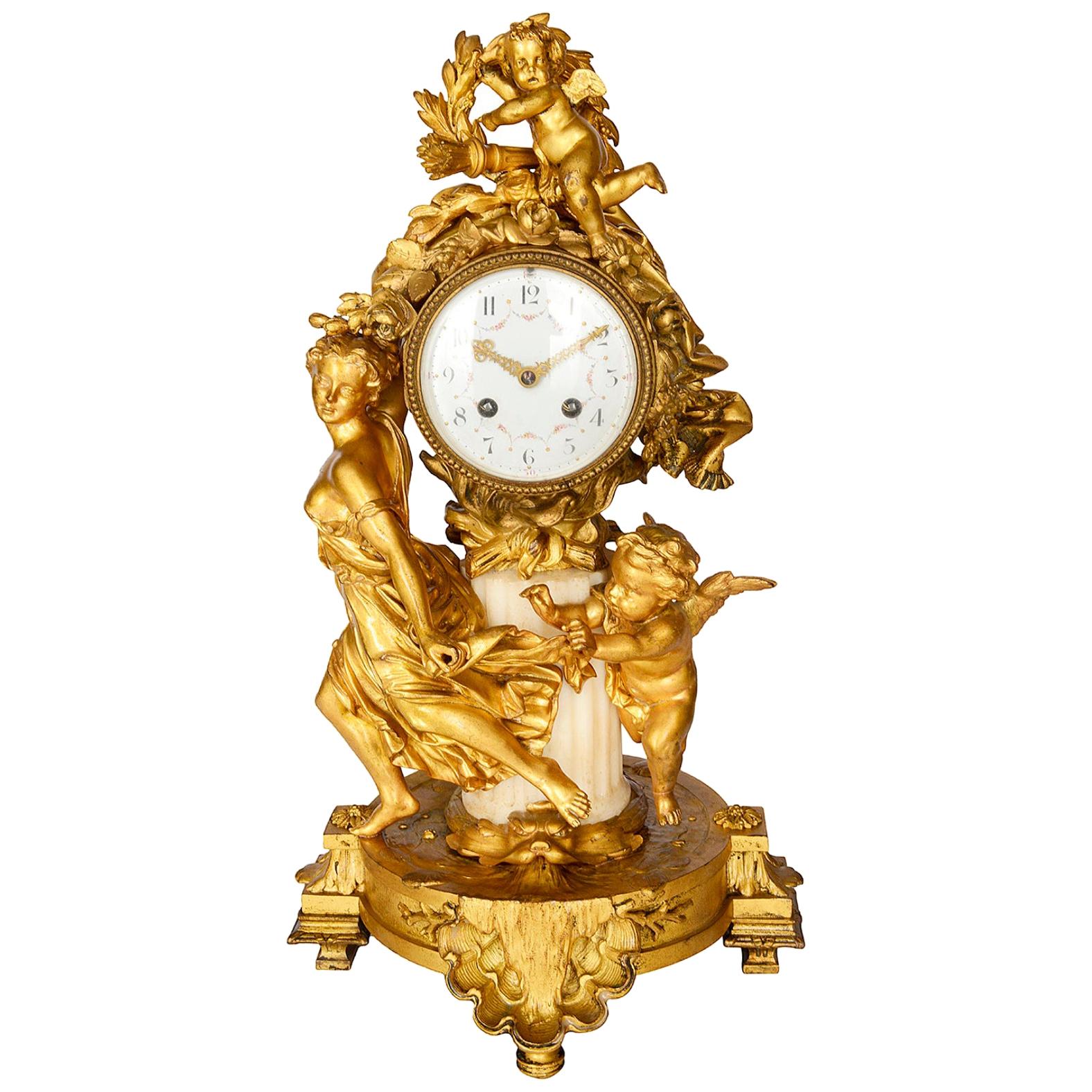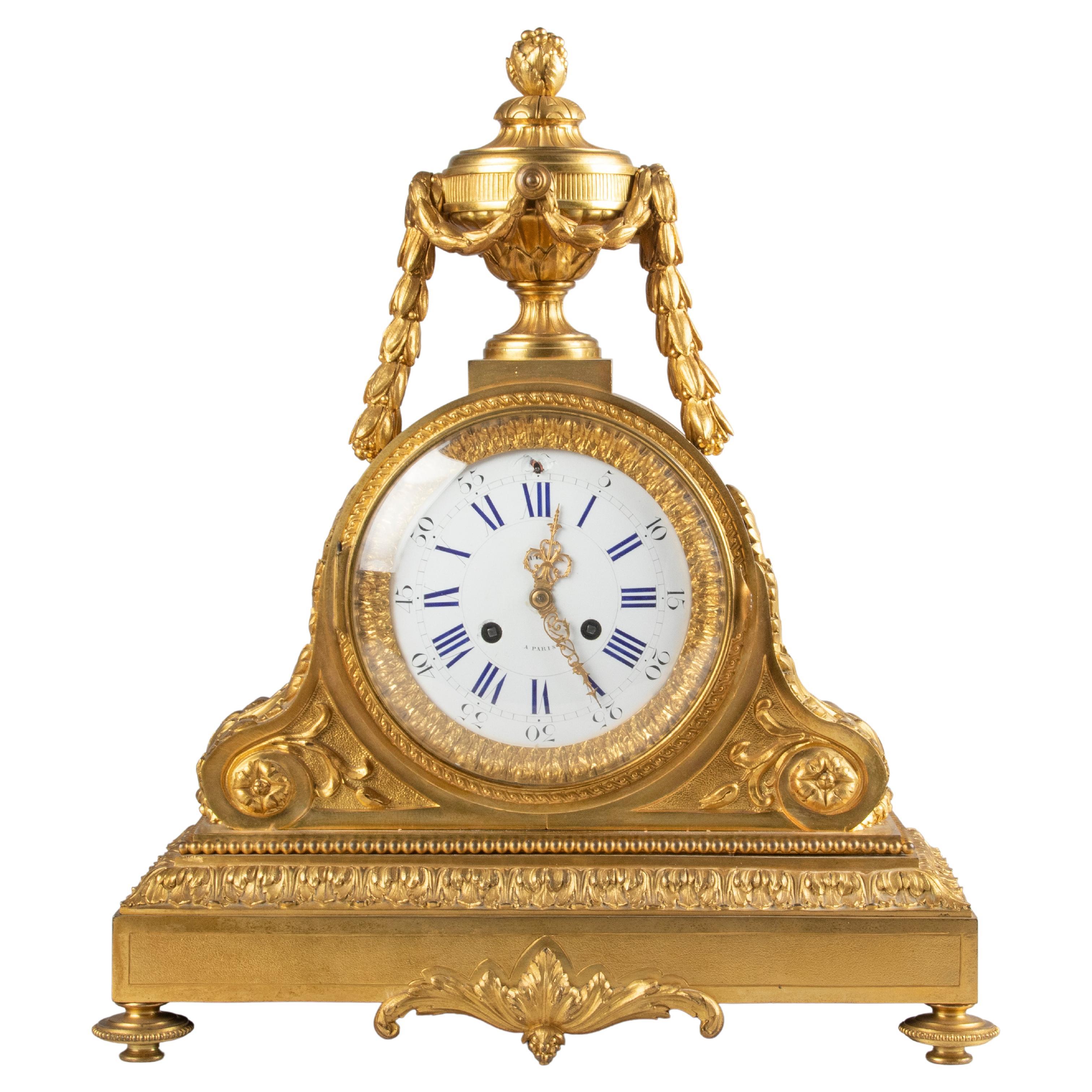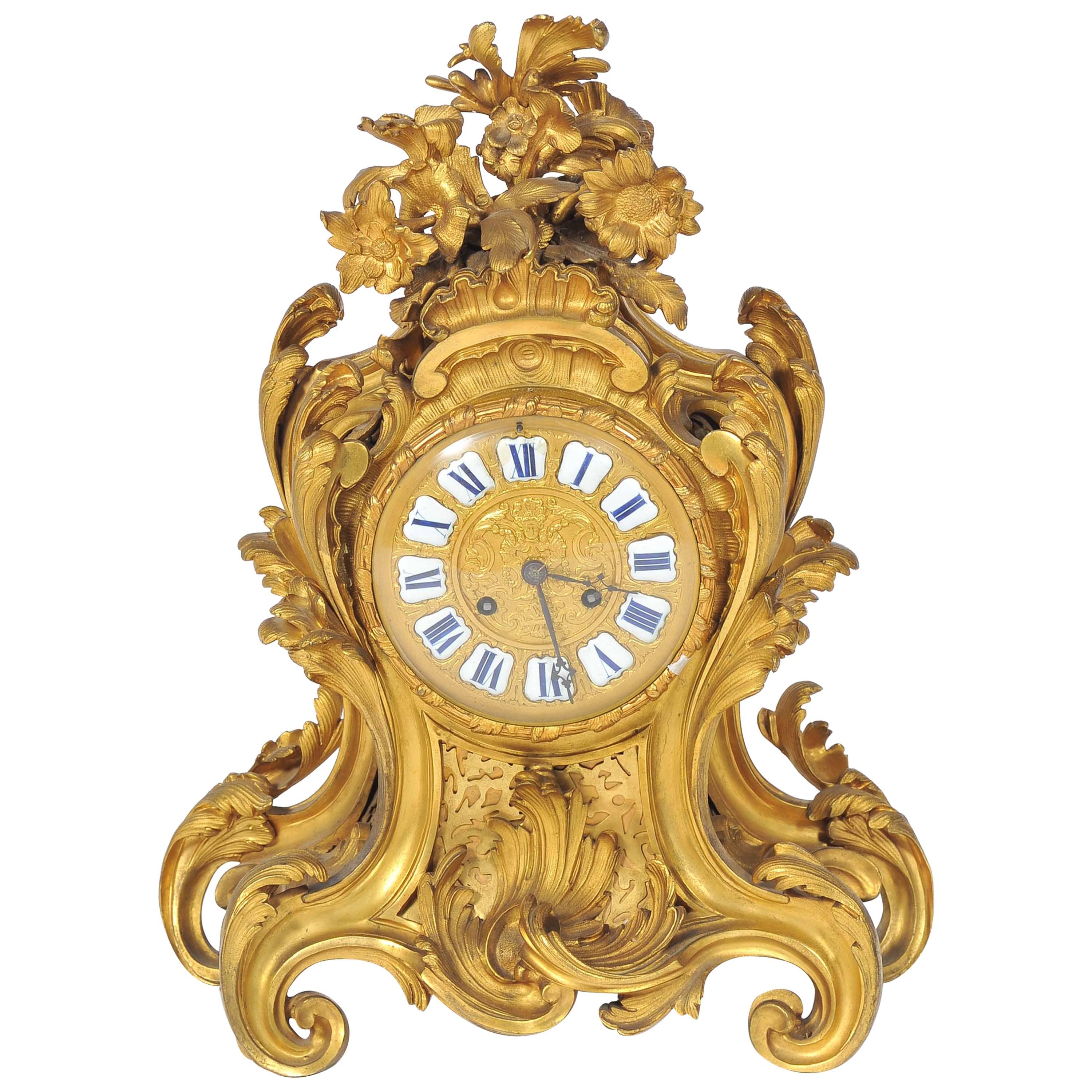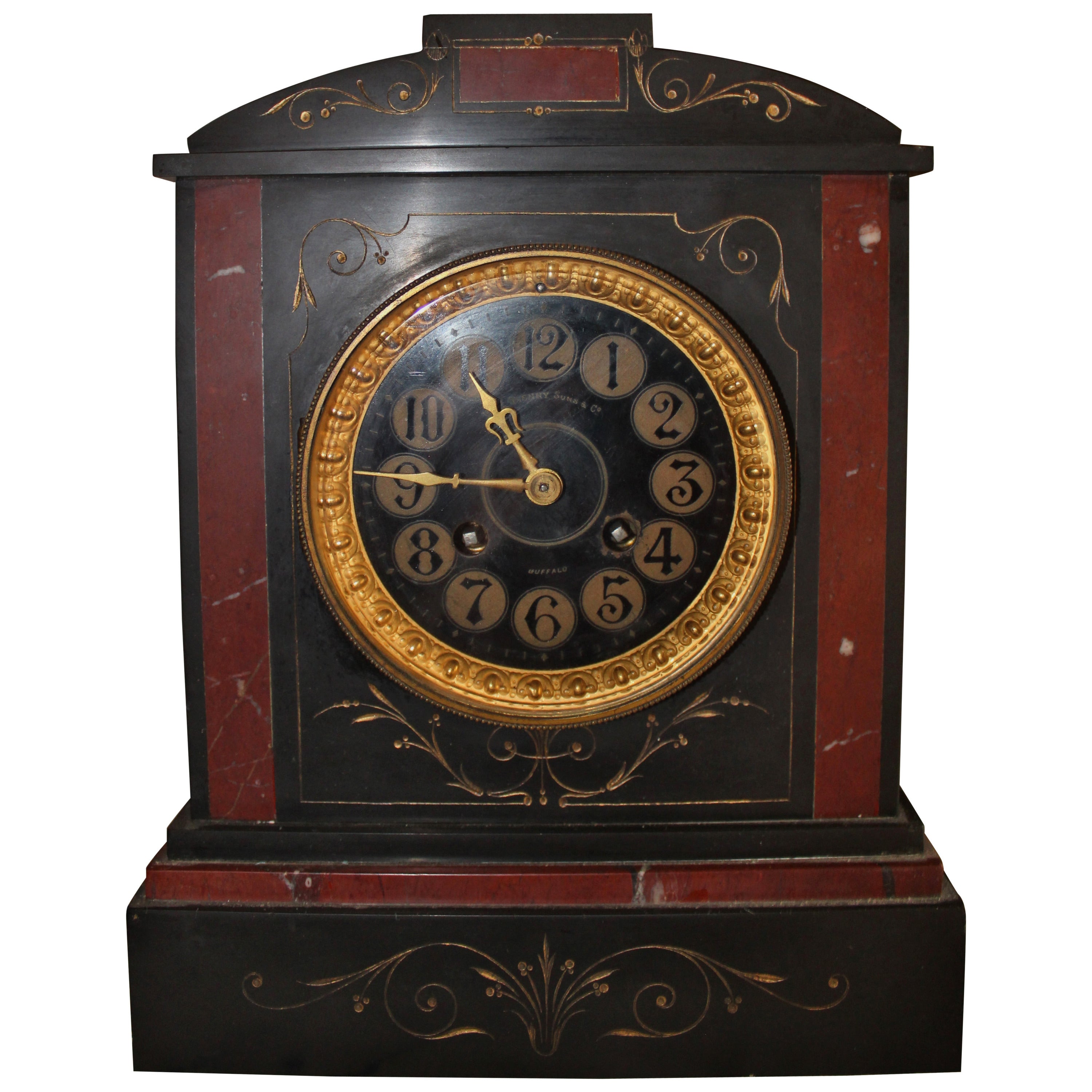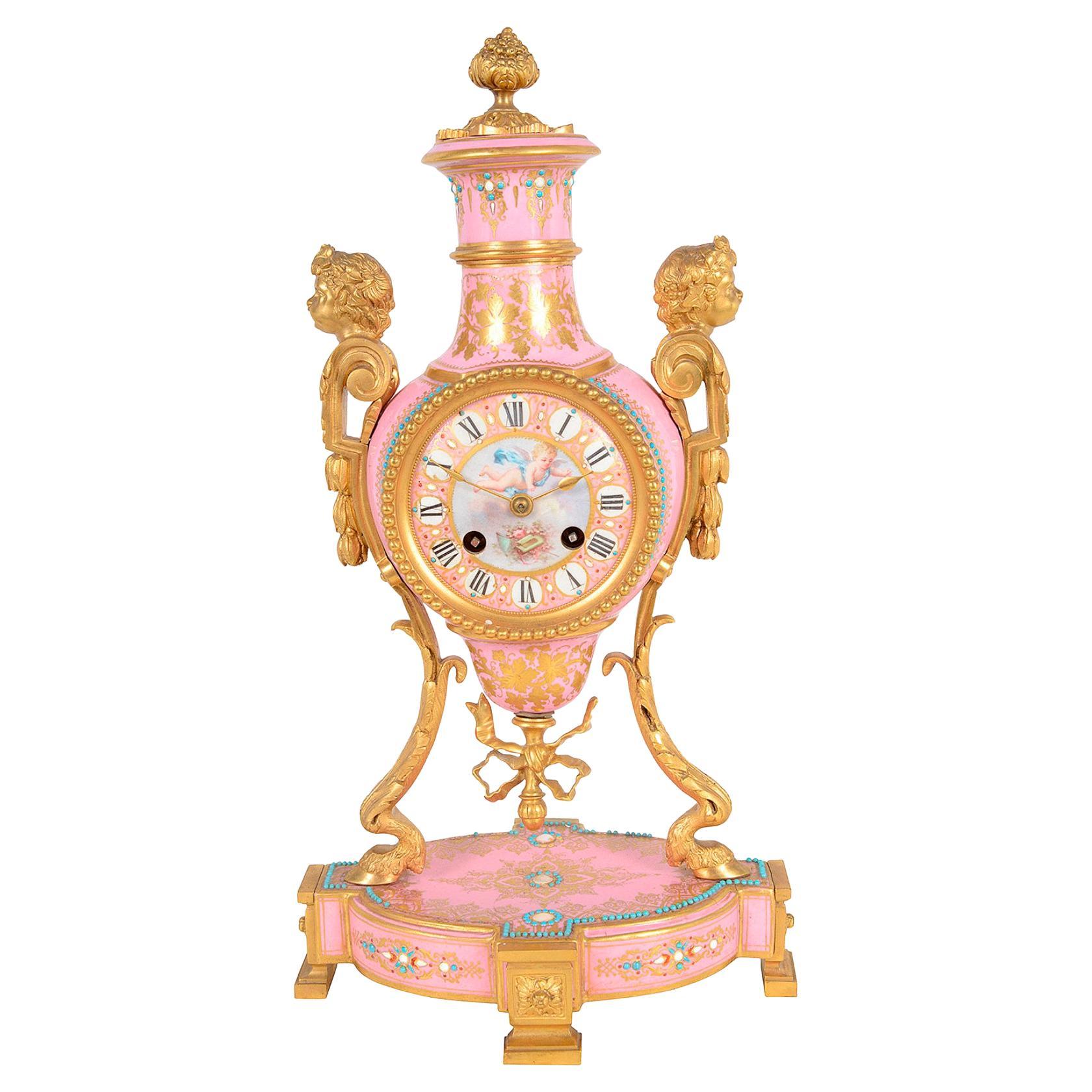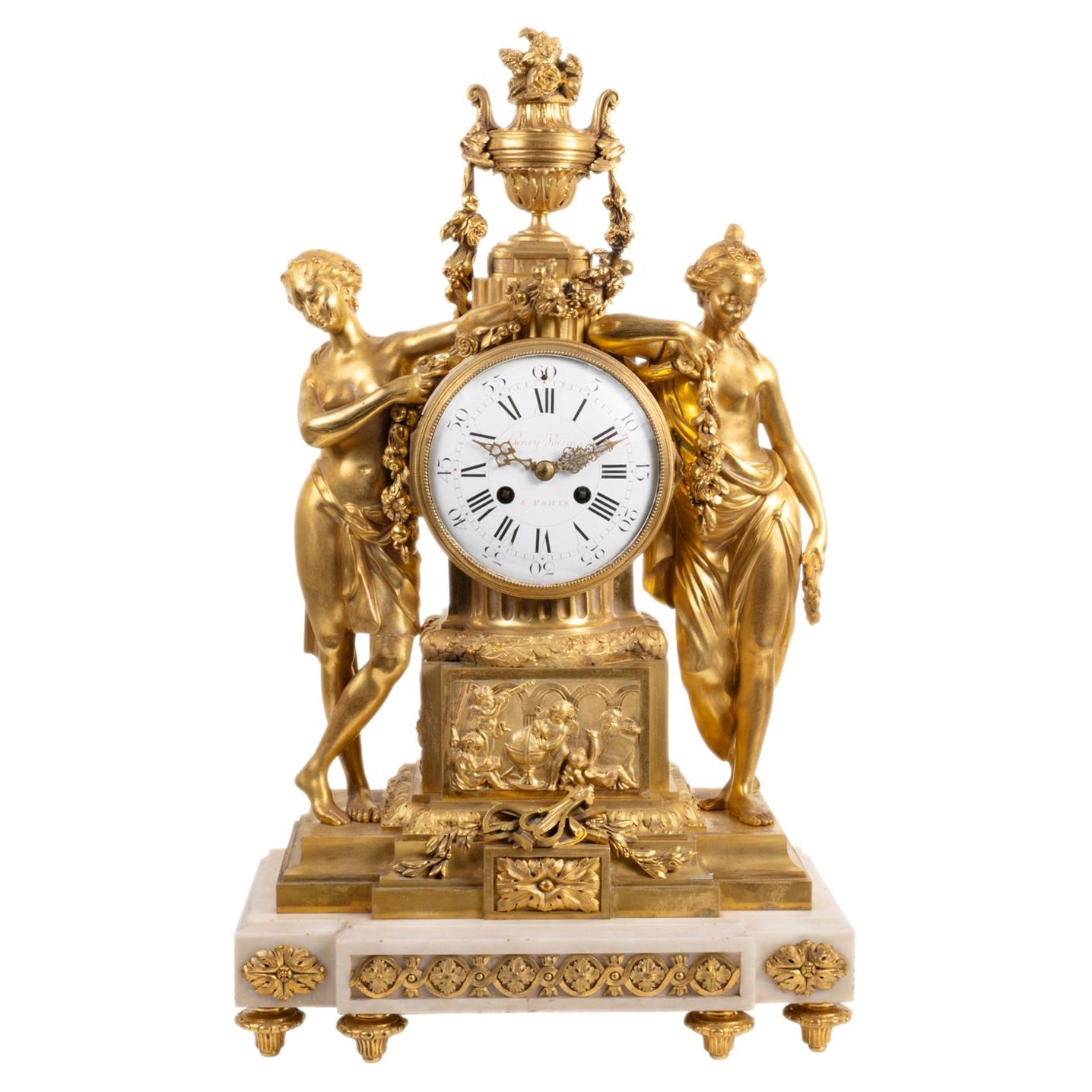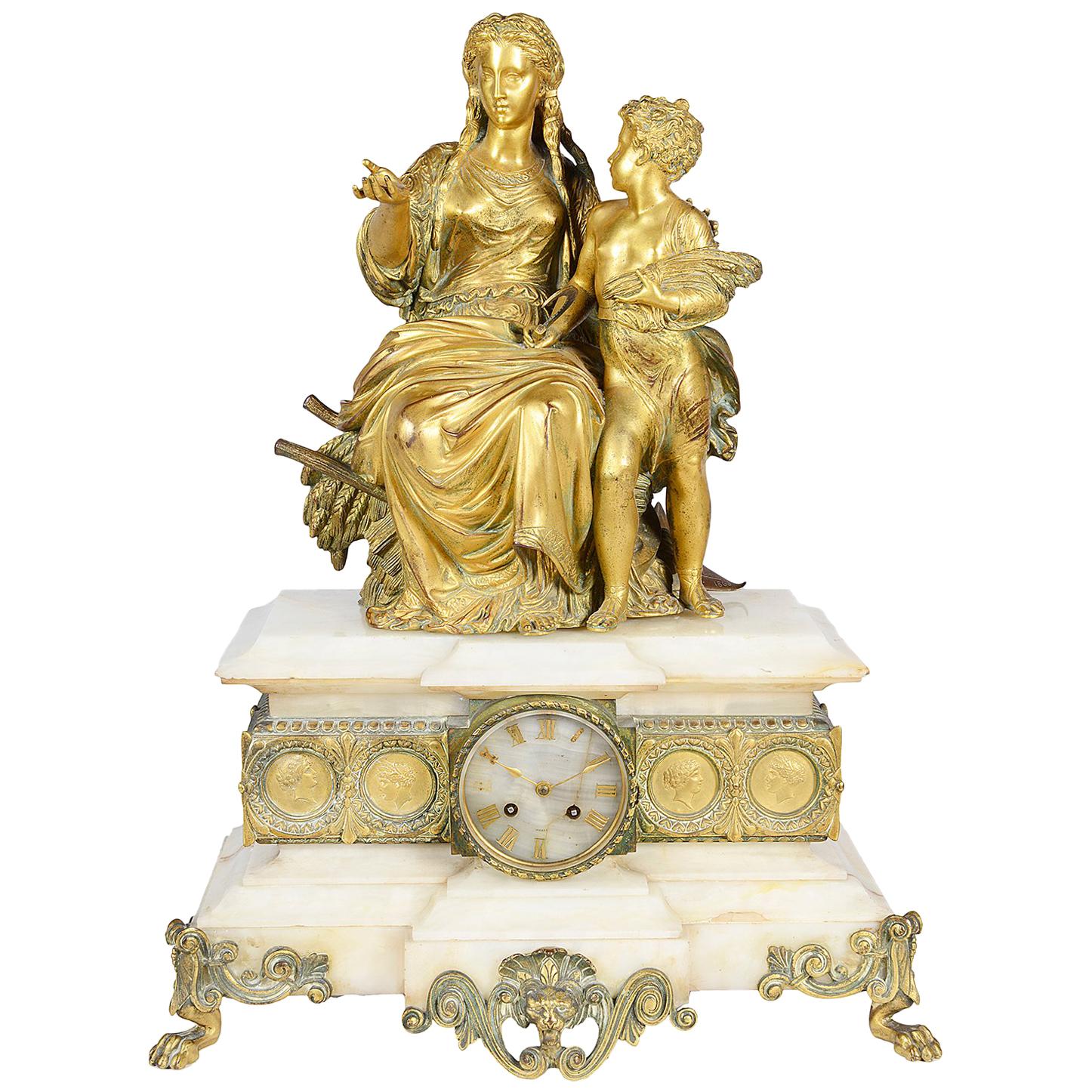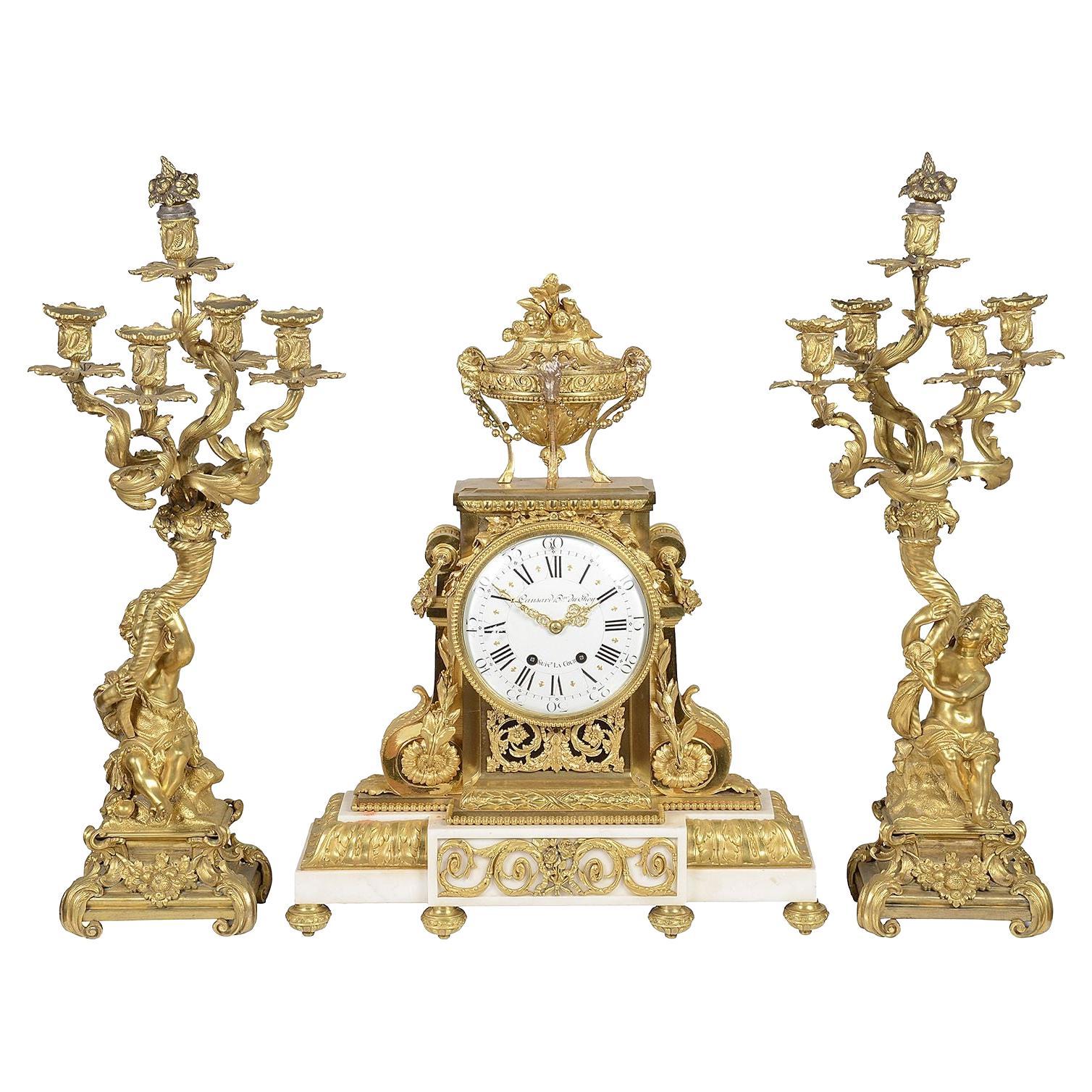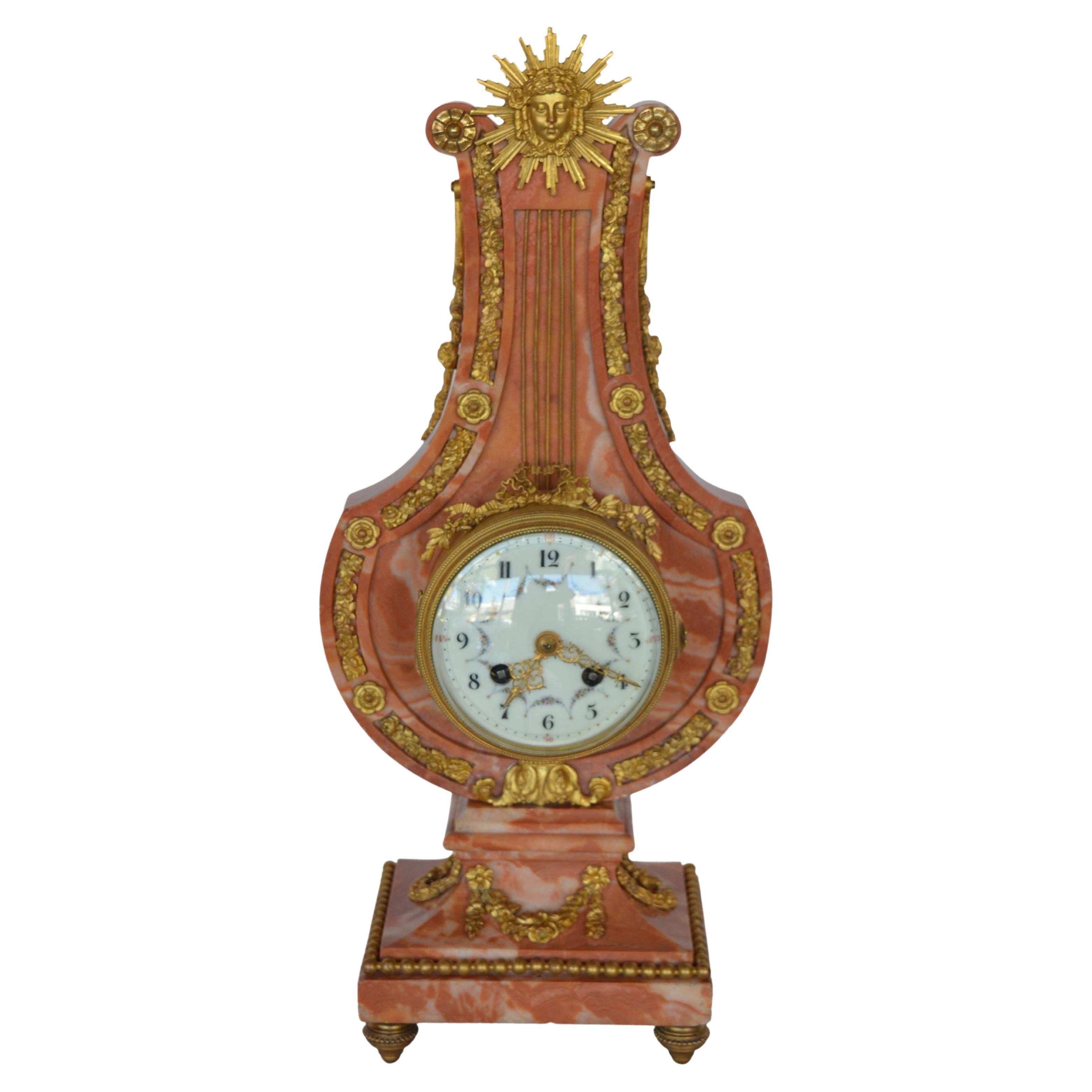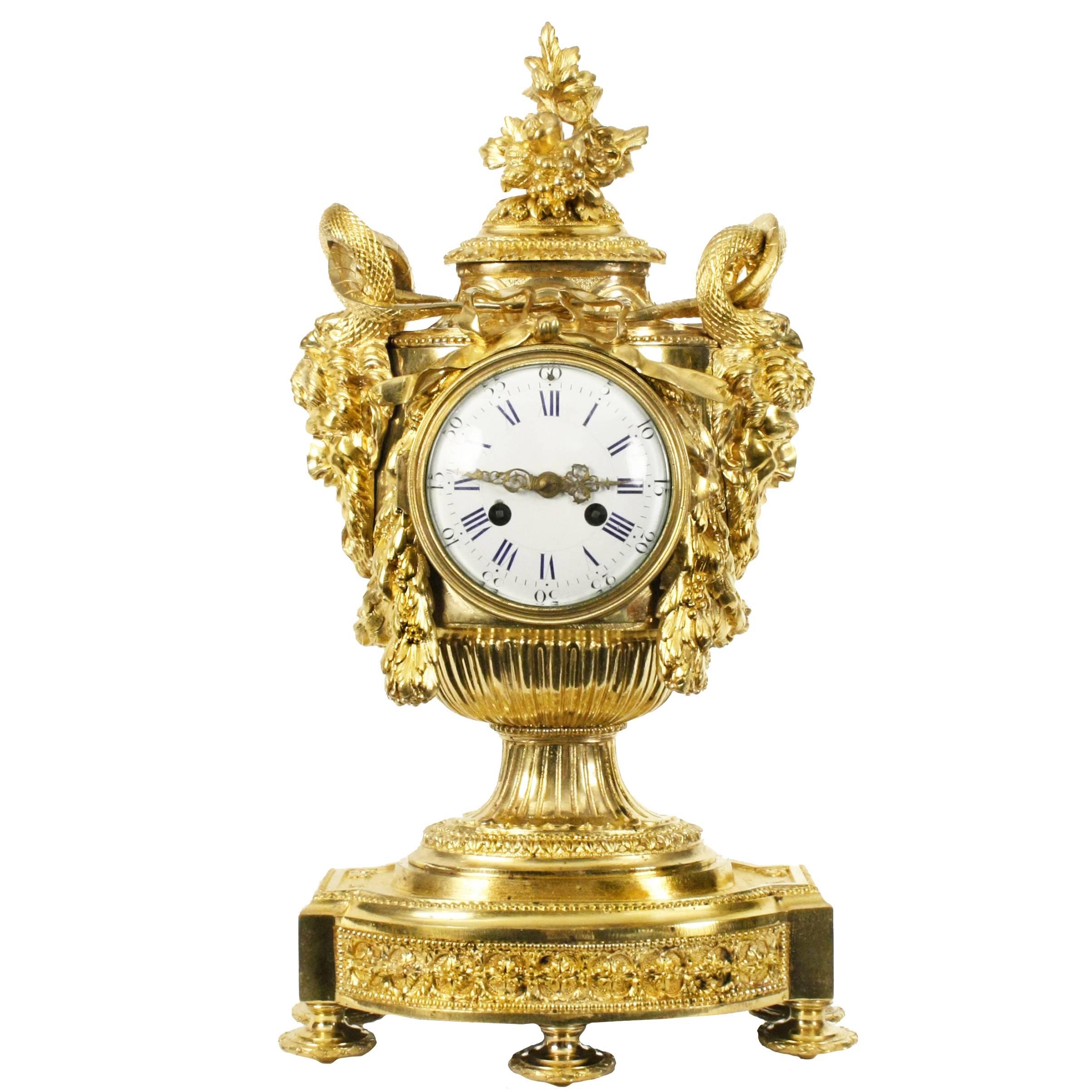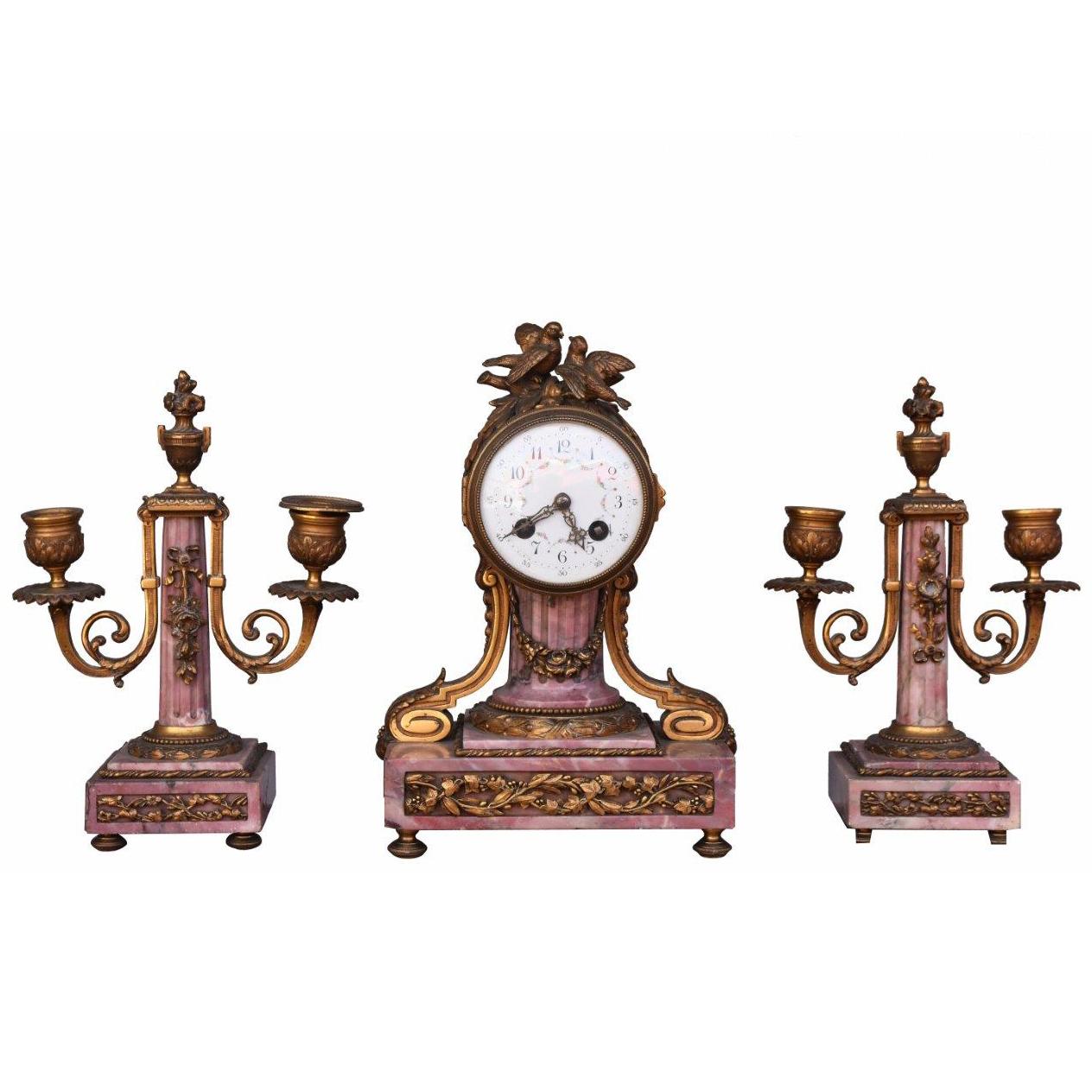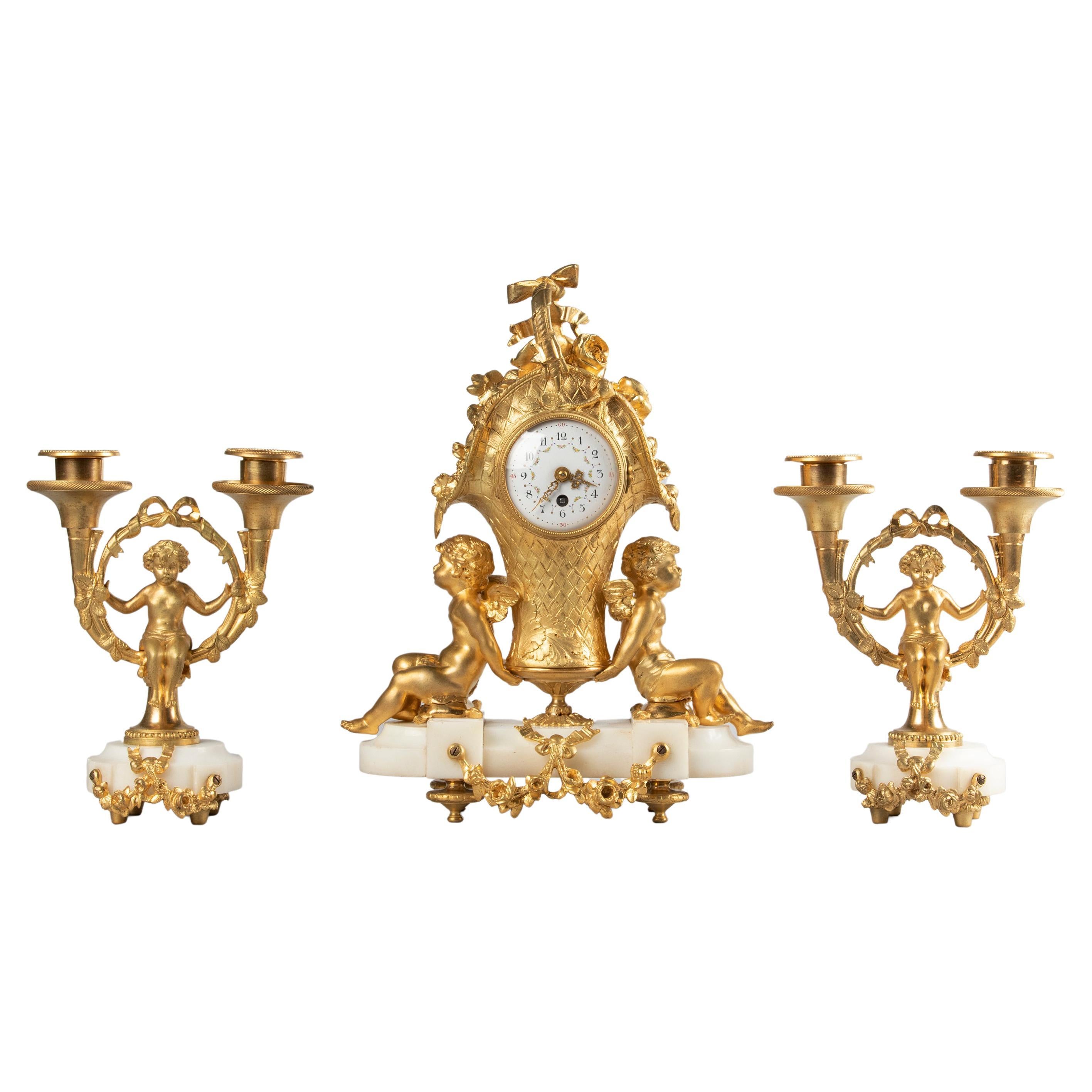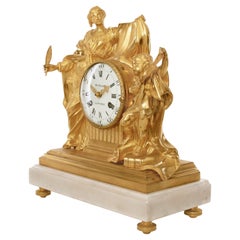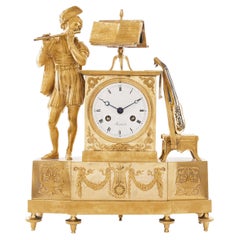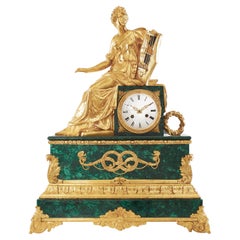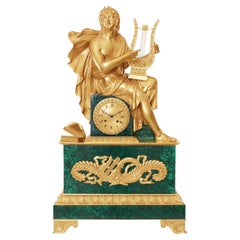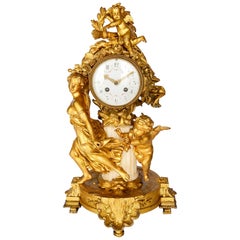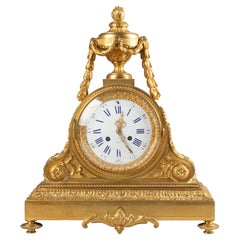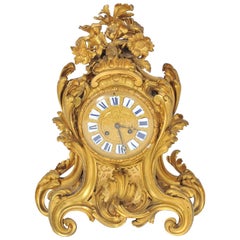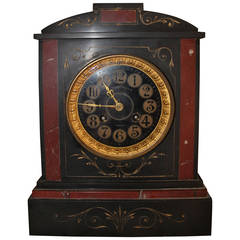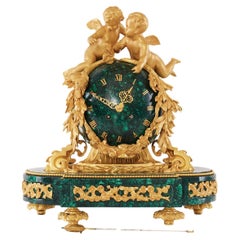
BY E.DUMOULINEUF À PARIS A of mantel clock in the style of Louis XVI, the 19th c
View Similar Items
Want more images or videos?
Request additional images or videos from the seller
1 of 5
BY E.DUMOULINEUF À PARIS A of mantel clock in the style of Louis XVI, the 19th c
About the Item
- Dimensions:Height: 14.97 in (38 cm)Width: 13.78 in (35 cm)Depth: 7.49 in (19 cm)
- Style:Louis XVI (Of the Period)
- Materials and Techniques:
- Place of Origin:
- Period:
- Date of Manufacture:1840-1860
- Condition:Rewired. Wear consistent with age and use. The clock is in excellent and perfect working condition. In addition, it was recently cleaned and serviced by a professional clockmaker who specializes in maintaining museums, The eight-days going movement. It strikes the hour and half and hour on it.
- Seller Location:Warsaw, PL
- Reference Number:1stDibs: LU5826226368332
About the Seller
5.0
Vetted Professional Seller
Every seller passes strict standards for authenticity and reliability
Established in 2021
1stDibs seller since 2021
32 sales on 1stDibs
Typical response time: 8 hours
Authenticity Guarantee
In the unlikely event there’s an issue with an item’s authenticity, contact us within 1 year for a full refund. DetailsMoney-Back Guarantee
If your item is not as described, is damaged in transit, or does not arrive, contact us within 7 days for a full refund. Details24-Hour Cancellation
You have a 24-hour grace period in which to reconsider your purchase, with no questions asked.Vetted Professional Sellers
Our world-class sellers must adhere to strict standards for service and quality, maintaining the integrity of our listings.Price-Match Guarantee
If you find that a seller listed the same item for a lower price elsewhere, we’ll match it.Trusted Global Delivery
Our best-in-class carrier network provides specialized shipping options worldwide, including custom delivery.More From This Seller
View AllMantel Clock 18th Century Louis XVI Period by Baillon À Paris
Located in Warsaw, PL
This exceptional mantel clock was crafted by Jean-Baptiste Baillon III, one of the most renowned and innovative horologists of his era. Baillon served an elite clientele, including t...
Category
Antique 18th Century French Louis XVI Mantel Clocks
Materials
Marble, Bronze
Mantel Clock 19th Century Styl Empire by Ferdinand Berthoud À Paris
Located in Warsaw, PL
Ormolu bronze mantel clock flanked by a troubadour and musical instruments, signed 'Ferdinand Berthoud a Paris'.
The end of the 18th and beginning of the 19th century was a crucial time in which new technological advances helped to make watches more accurate and more portable. During the 1790s, the production of gilded bronze increased considerably as working conditions improved. The freedom of trade initiated by the French Revolution allowed many casters to develop large factories. The new factory environment gave them a chance to execute all stages of bronze work including drawing, casting, gilding, assembly, and trade of art objects. While the bronzers took creative liberty in creating all kinds of clocks in contrast to the noble and rigorous structure carried by the movement of neoclassicism. Under the reign of Empire, the case designs started gradually to develop away from a proportionate and strict classicism towards a baroque style and revival style. The rediscovery of medieval civilization was one of the intellectual curiosities of the beginning of the 19th century, with much input from the Ancien Régime and its institutions, rites and the medieval churches in which family ceremonies occurred.
This early nineteenth-century figural mantel clock is surmounted by a medieval musician. To be more precise, it is a french troubadour. Troubadours were known for composing and performing lyric poetry for the nobility back during medieval times. The clock is featuring a chiselled bronze troubadour, dressed in medieval fashion while holding a flute, playing a tune from sheet music called "Du Troubadour" that is resting on top of the rectangular clock case. In addition to that, the clock features a gilt bronze lute or vielle resting on a small stool on the opposite side of the clock’s case. The white enamel dial features the inscription Berthoud and is underlined by a bronze entourage chiselled with palmette motif, plus encompassed by c-scrolls and wreaths. The original hands are in blued steel and encircled by Roman numerals indicating hour next to Arabic numerals indicating minutes.
The small details that adorn the hexagonal plinth are reliefs, depicting two water fountains or basins on both sides with a lyre in between. The sculpted image of a lyre raised above the background features also foliage garlands tied on top with ribbons. The clock rests on seven spinning feet.
The clock was made in the well-known workshop of the Berthoud’s family that was recognized for their excellent work by the King.
Berthoud Clockmakers History.
Ferdinand Berthoud was a horologist and author of extensive treatises on timekeeping as well as a Swiss clockmaker serving the king of France, that produced many marine clocks, including a weight-driven version that inspired the first American sea-going clock. He was born in Plancemont, Switzerland, the son of an architect and judiciary. In 1741 he began a three-year apprenticeship as a clockmaker under his brother, Jean-Henri. He made his first marine chronometer in 1754 (sent for trial in 1761) and in 1764 was appointed a member of the Royal Society, London and Horloger Mécanicien de Sa Majesté et de la Marine ayant l'inspection de la construction des Horloges Marines. In 1769, Ferdinand Berthoud sent for his nephew Pierre-Louis Berthoud (1754–1813), commonly known as Louis Berthoud, a talented young watchmaker and clockmaker, inviting him to come to Paris from Couvet, Switzerland, to pursue his apprenticeship. Louis helped Ferdinand manufacture and repair the sea clocks...
Category
Antique Late 18th Century French Louis XVI Mantel Clocks
Materials
Bronze
Mantel Clock 19th Century, Louis Philippe Charles X Style
Located in Warsaw, PL
A magnificent malachite and bronze clock. in which Apollo is sitting on the top of it.
Apollo the god of nowledge, oracles, purity, art, music (he directed the choir of the Muses), p...
Category
Antique Early 19th Century French Louis Philippe Mantel Clocks
Materials
Malachite, Bronze
Mantel Clock 19th Century, Louis Philippe Charles X Style
Located in Warsaw, PL
Mantel clock 19th century Louis Philippe Charles X period ormolu pendulum with malachite plinth. This stunning clock is surmounted by a gilded bronze figure of a Greek god – Apollo playing on a lyre, seated on the malachite square...
Category
Antique Early 19th Century French Louis Philippe Table Clocks and Desk C...
Materials
Malachite, Bronze
Mantel Regulatory Clock 18th Century Louis XVI
Located in Warsaw, PL
This elegant fireplace clock exemplifies the refined aesthetic and impeccable craftsmanship characteristic of the Louis XVI style in France. The clock showcases a harmonious blend of...
Category
Antique 19th Century French Louis XVI Mantel Clocks
Materials
Bronze
Mantel Clock 19th Century Styl Empire by Leroy à Paris
Located in Warsaw, PL
A magnificent 19th-century Empire-style mantel clock, signed by the esteemed clockmaker Leroy à Paris. This timepiece exudes classical elegance, featuring a finely detailed gilt bron...
Category
Antique Early 19th Century French Empire Mantel Clocks
Materials
Bronze
You May Also Like
French 19th Century Louis XVI Style Mantel Clock
Located in Brighton, Sussex
An enchanting late 19th century French gilded ormolu and marble mantel clock, depicting cherubs playing, one chasing a young girl, the other hiding amongst a wreath and foliage. The ...
Category
Antique Late 19th Century French Louis XVI Mantel Clocks
Materials
Marble, Ormolu
Large 19th Century Louis XVI Style Bronze Ormolu Mantel Clock Guibal Paris
Located in Casteren, Noord-Brabant
A fine and large Louis XVI style French mantel clock, from the end of the Napoleon III period, 1870-1880. The clock is bronze casted and has a fire-gilded finish, the dial is enamele...
Category
Antique 1870s French Louis XVI Mantel Clocks
Materials
Ormolu, Brass, Bronze, Enamel
19th Century Louis XVI style Mantel Clock
Located in Brighton, Sussex
A good quality French 19th century Rococo gilded ormolu mantel clock. The eight day movement, chimes on the hour and half hour.
Category
Antique 19th Century French Rococo Mantel Clocks
Materials
Ormolu
19th Century French Marble Mantel Clock, Louis XVI Style
Located in Hamilton, Ontario
19th century French marble mantle clock.
High quality black marble with red marble accents retailed by Glenny & Sons Co. Buffalo.
Free shipp...
Category
Antique 19th Century French Louis XVI Mantel Clocks
Louis XVI Style Pink Porcelain Mantel Clock, 19th Century
Located in Brighton, Sussex
A very good quality French 19th Century Louis XVI style gilded ormolu and 'Severs' style pink porcelain mantel clock. In the form of a vase with an inset clock face, an eight day dur...
Category
Antique Late 19th Century French Louis XVI Mantel Clocks
Materials
Ormolu
Large Louis XVI Style Ormolu Mantel Clock, 19th Century
By Henri Voisin
Located in Brighton, Sussex
A Fine quality French 19th century gilded ormolu and white marble mantel clock in the Louis XVI style. Having a two handled urn to the top with flowers and garlands draping down to t...
Category
Antique Early 19th Century French Louis XVI Mantel Clocks
Materials
Marble, Ormolu
Recently Viewed
View AllMore Ways To Browse
Ancient Roman Bowl
Gold Clock Charm
Block Clock
Carved Bowl With Lid
Bronze Goddess Clock
Greek Key Bowl
Antique Green Marble Mantel Clock
Stone Mantel Green
The Empire Strikes Back
Lapis Globe
Lapis Lazuli Globe
Gold Greek Key Style Plates
Lapis Lazuli Block
Athena Clock
Lapis Lazuli Empire Clock
Antique Figural Bell
1870 Bronze Clocks
Medaille Antique
